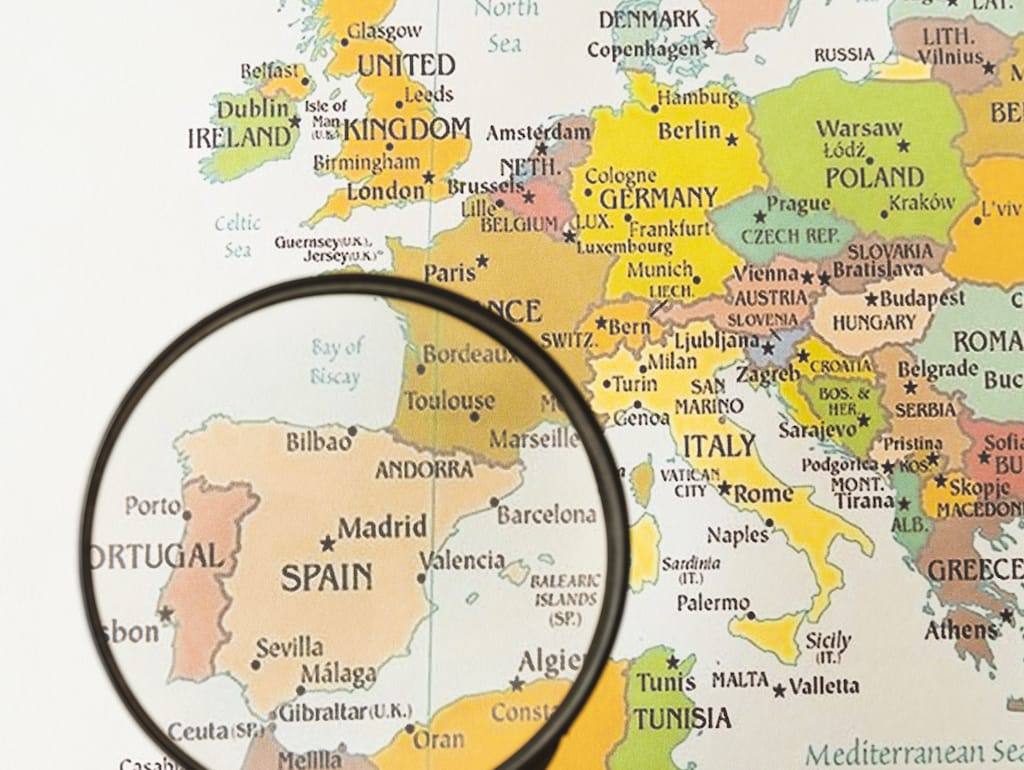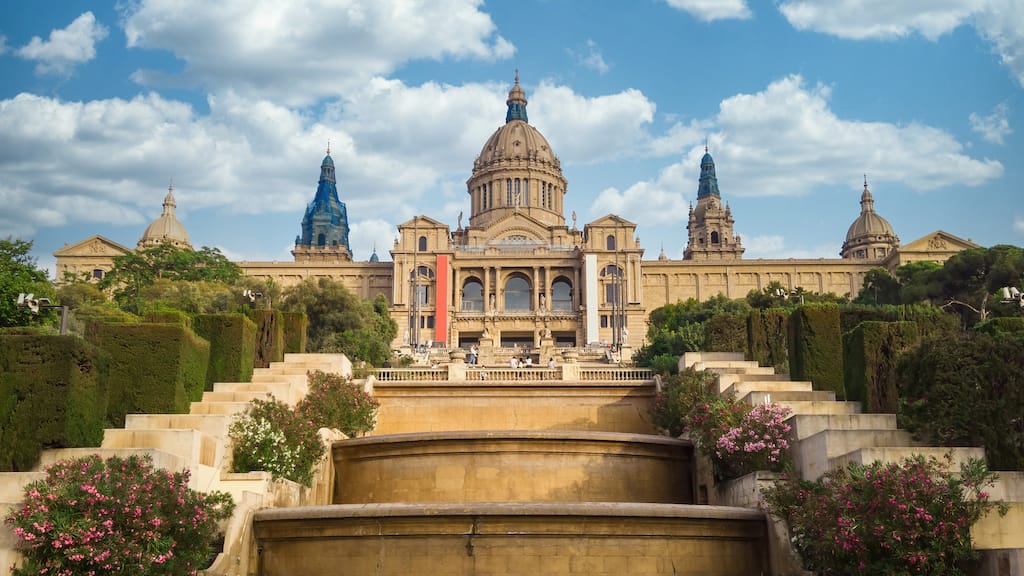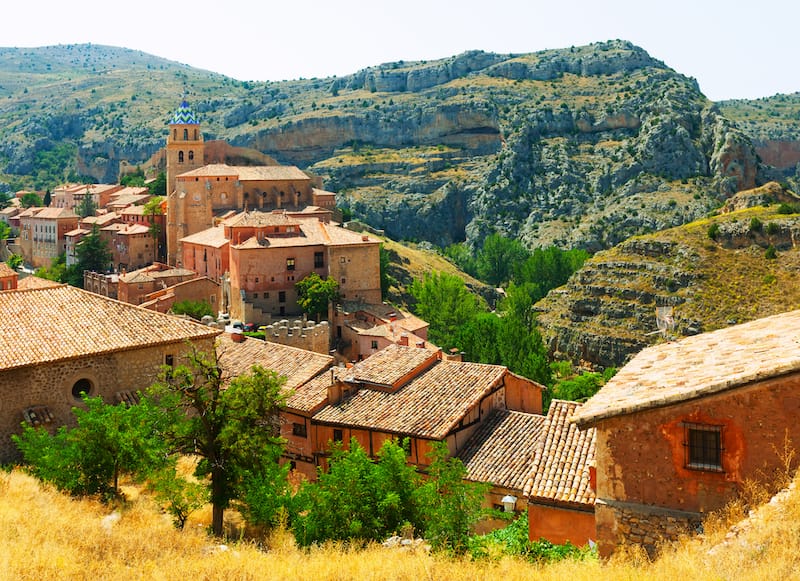
Spain is a country full of culture, history, and natural beauty. It is one of the most popular tourist destinations in the world.
Whether you are planning a trip to Spain or are just interested in learning more about this beautiful country, you have come to the right place.
This blog post will provide an overview of everything you need to know about traveling in Spain.
We will cover transportation, accommodation, food, and sightseeing. So whether you are gearing up for your first trip to Spain or are just looking for some travel tips, read on!
Overview

Spain is a country located in southwestern Europe. It borders France, Portugal, and Andorra to the east; Gibraltar to the south; and Morocco to the north.
The capital of Spain is Madrid, while its largest city is Barcelona.
It also has several other important cities such as Sevilla (Seville), Valencia, Malaga, Zaragoza (Saragossa), Murcia, Cartagena de Indias (Cartagena), Pamplona (Iruna), Vigo and Oviedo.
These are just some of the many places you can visit during your trip to Spain.
- Culture
Spain is a country with a rich culture and history. The Spanish are known for their passion for food, wine, art, and dance.
There are many exciting things to see and do in Spain, from visiting ancient castles and cathedrals to watching traditional Flamenco dancing.
Nature lovers will also find plenty to enjoy in Spain thanks to its diverse landscape, including mountains, forests, beaches, and islands.
- History
Spain is a country with a long and fascinating history. It was first inhabited by the Iberian people, followed by the Celts, Romans, Visigoths, and Moors.
In 1492, Christopher Columbus sailed from Spain to discover America.
During the 16th century, Spain was ruled by two powerful monarchs: Ferdinand II of Aragon and Isabella I of Castile. These two rulers united their kingdoms and launched what would become known as the Spanish Inquisition.
Later, Spain became a colonial power with territories worldwide, including Latin America, The Philippines, and Morocco.
The 20th century saw many turbulent events in Spain, such as the Civil War (1936-1939), the dictatorship of Francisco Franco (1939-1975), and the return of democracy in 1978.
Today, Spain is a modern and democratic country with a rich culture and history.
- Natural beauty
Spain has a diverse landscape that includes mountains, forests, beaches, and islands.
One of the most popular tourist destinations in Spain is the island of Mallorca, which is known for its beautiful beaches and crystal-clear waters.
The Pyrenees Mountains, located in the north of Spain, are excellent for hiking and skiing.
Andalusia, located in the south of Spain, is home to the Sierra Nevada mountain range, which features some of Europe’s highest peaks.
Transportation
There are many different ways to get around Spain, depending on your budget and preferences.
If you want to travel cheaply, buses or trains are your best option. There are extensive bus networks throughout the country, and train tickets can be relatively affordable when purchased in advance.
For those who prefer more comfort and convenience, renting a car may be a better option. This will give you more flexibility to explore different country areas at your own pace.
Finally, if you are short on time, flying between cities may be the best option.
- Airports and airlines
Spain has several major airports which serve both domestic and international flights. The two largest airports are Madrid-Barajas Airport and Barcelona-El Prat Airport.
Some of the biggest airlines operating in Spain include Iberia, Ryanair, Vueling, and EasyJet.
- Rail travel
Spain has a comprehensive railway network that covers the entire country. Therefore, train tickets can be relatively affordable when purchased in advance. In addition, there are many different types of trains to choose from depending on your needs.
The high-speed AVE train is a great way to travel between major cities such as Madrid, Barcelona, Seville, and Valencia.
- Bus travel
There are extensive bus networks throughout Spain which offer good value for money. In addition, buses are a great way to get around more small towns and villages without train or airport service.
- Car rental
Suppose you want more flexibility and convenience while traveling in Spain. In that case, renting a car may be the best option for you. Car rental companies are plentiful in Spain, and you can find some great deals if you book in advance.
Before driving in the country, be sure to familiarize yourself with the Spanish traffic laws, as they are quite different from those in other European countries.
- Ferries
Spain is an excellent country for island hopping, and many ferries connect the mainland with its islands. The Balearic Islands, located in the Mediterranean Sea, are the most popular destination for ferry travel in Spain.
- Health and safety
Before traveling to any foreign country, it is essential to research health and safety precautions. Spain is a relatively safe country to visit, but there are some things you should be aware of.
In particular, be aware of pickpockets and thieves who often target tourists. Be sure to keep your belongings safe and secure at all times.
Also, be aware of the potential for sunburns as Spain has extreme sunlight. Therefore, make sure to wear sunscreen and a hat when exploring outdoors.
Accommodation
Various accommodation options are available in Spain, depending on your budget and preferences.
If you want to stay in a centrally located hotel, prices will be relatively high. However, many affordable hostels and pensions are available for those on a tighter budget.
For those who want to experience Spanish culture firsthand, renting a room or apartment from a local family can be a great option. This will allow you to live like a Spaniard and learn about their customs and traditions.
Food and drink

Spanish food is famous for its variety and flavor. There are many different types of cuisine to choose from, depending on your taste preferences.
Some of the most popular dishes include paella, tapas, chorizo, and sangria.
Spain is also home to some of the world’s best wines which can be enjoyed at restaurants or during a relaxing evening drink at a local bar.
Attractions
Spain has a rich culture and history that dates back thousands of years. Some of the most popular tourist attractions in Spain include:
- The Alhambra palace in Granada
The Alhambra is a palace and fortress complex located in Granada, Andalusia, southern Spain. It was constructed by the Nasrid dynasty in the 13th and 14th centuries. It was the last Muslim stronghold in the Iberian Peninsula.
The Alhambra is one of Spain’s most popular tourist attractions, and over 1.5 million people visit it each year.
- The Sagrada Família church in Barcelona
The Sagrada Família is a Roman Catholic church in Barcelona, Catalonia, Spain. It was designed by the architect Antoni Gaudí and has been under construction since 1882.
The Sagrada Família is one of Barcelona’s most popular tourist attractions and is visited by over two million people each year.
- The Prado Museum in Madrid
The Prado Museum is located in Madrid, Spain, and houses one of the world’s largest collections of European art from the 12th to 19th centuries.
The Prado Museum is one of the most popular tourist attractions in Madrid. It attracts over six million visitors each year.
- El Escorial monastery near Madrid
The El Escorial monastery is a royal palace and monastery located in San Lorenzo de El Escorial, about 45 kilometers northwest of Madrid, Spain.
The El Escorial is one of the most popular tourist attractions in Spain. It attracts over two million visitors each year.
- The Camino de Santiago pilgrimage route
The Camino de Santiago is a pilgrimage route that runs from the French border to the Cathedral of Santiago de Compostela in Galicia, northwestern Spain.
The Camino de Santiago is one of Spain’s most popular tourist attractions and attracts over 250,000 pilgrims each year.
- The beaches of Mallorca and the Balearic Islands
Mallorca is the largest island in Spain and one of the most popular tourist destinations in Europe.
Mallorca is famous for its beautiful beaches, clear waters, and lively nightlife.
The Balearic Islands are a group of islands located off the eastern coast of Spain, which includes Ibiza, Menorca, Formentera, and Mallorca. They are known for their white sandy beaches and turquoise waters.
- The Pyrenees Mountains in the north of Spain

The Pyrenees Mountains are a range of mountains that run along with Spain and France.
They are a popular destination for hikers, skiers, and snowboarders. The Pyrenees Mountains offer some of the best skiing and snowboarding in Europe and are a great place to escape the summer heat.
The Alhambra is a palace and fortress complex located in Granada, Andalusia, southern Spain. It was constructed by the Nasrid dynasty in the 13th and 14th centuries. It was the last Muslim stronghold in the Iberian Peninsula.
- The Canary Islands off the southwest coast of Spain
The Canary Islands are a group of islands located in the Atlantic Ocean, about 350 kilometers south of Morocco.
They …